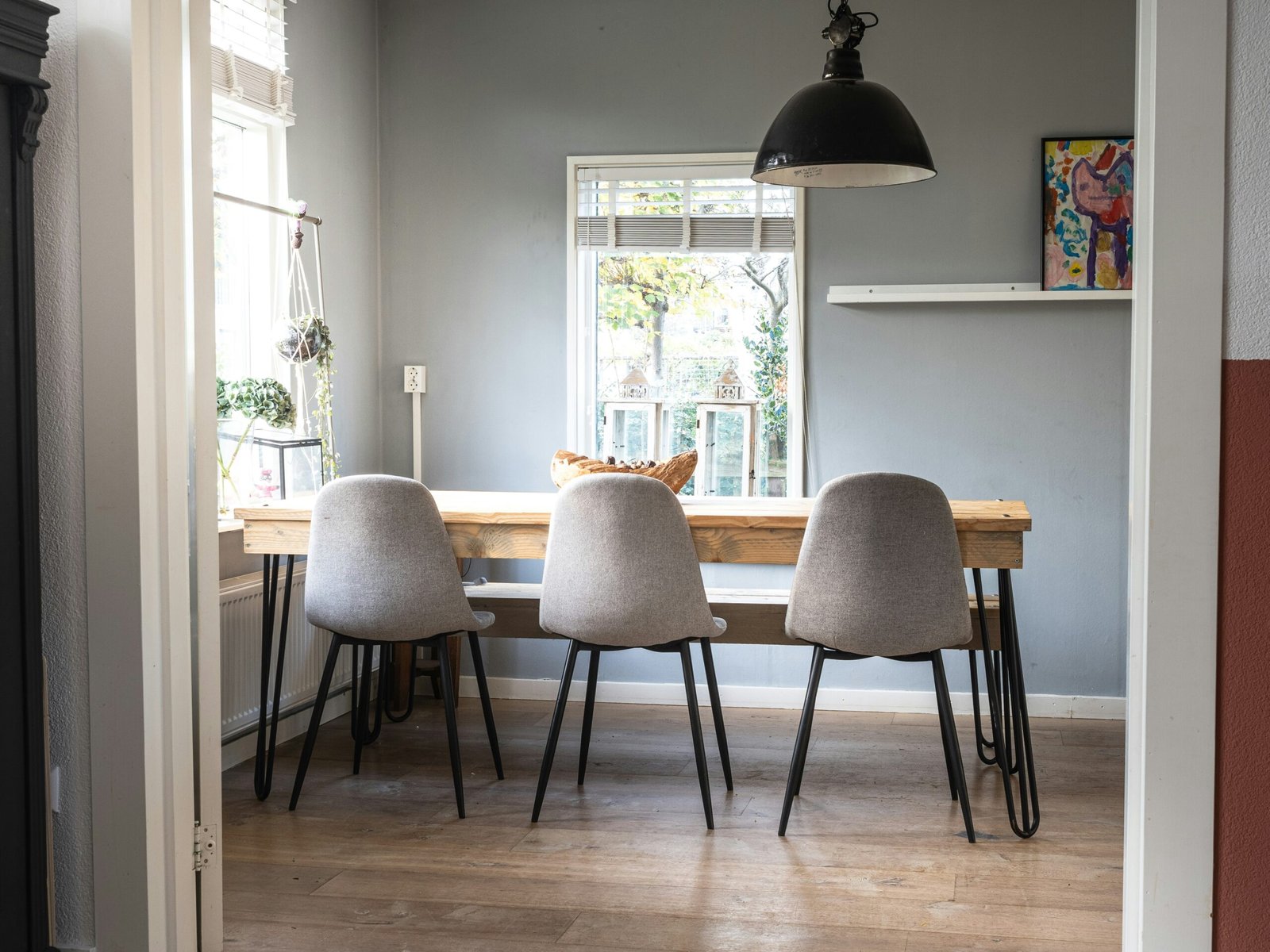

Introduction to Art in Everyday Life
Art in everyday life transcends mere aesthetic appeal to play a crucial role in shaping a fulfilling and balanced lifestyle. By integrating art into our daily routines, we actively cultivate creativity, which can significantly enhance our overall well-being. Whether it’s through visual arts, music, writing, or even culinary endeavors, engaging with art provides an essential outlet for self-expression and emotional release.
The presence of art not only enhances our living and working environments but also elevates our mental health. Studies consistently show that engaging in creative activities can reduce stress, alleviate symptoms of depression, and promote a sense of calm. When we immerse ourselves in artistic pursuits, we can experience a profound sense of accomplishment, which bolsters our self-esteem and encourages further creative exploration.
Furthermore, art strengthens our cognitive abilities by encouraging our brains to think in innovative and divergent ways. This continual exercise of the mind fosters adaptability and problem-solving skills, paramount in both personal and professional contexts. By integrating art into our daily lives, we invite a perpetual state of discovery and learning, which keeps our minds agile and open to new experiences.
Incorporating art into everyday living need not be complicated or time-consuming. It can be as simple as rearranging the furniture to create a more visually appealing space, dedicating time to sketch, paint, or listen to a favorite piece of music. These seemingly minor adjustments can have significant impacts on our mood and outlook, making our environments more stimulating and conducive to creativity.
Ultimately, the role of art in everyday life is about more than just creativity; it is about nurturing a lifestyle that harmonizes the aesthetic, emotional, and intellectual aspects of our being. By valuing and prioritizing art in our daily lives, we can foster a more balanced, enriched, and meaningful existence.
Understanding Different Forms of Art
Art encompasses a diverse range of forms, each offering unique ways to enrich our daily lives. Incorporating art into everyday routines can spark creativity and enhance overall well-being.
Painting stands as one of the most accessible and versatile forms of art. Whether it’s through a structured painting session or casually doodling in a sketchbook, engaging in painting can be a therapeutic activity. At home, you can create a designated art space or participate in virtual painting classes. Hanging your own artwork can also add a personal touch to your living space, transforming your home into a mini-gallery.
Sculpture offers a hands-on approach to creativity. Working with clay, metal, or wood can be a fulfilling activity that also serves practical purposes. For instance, crafting DIY home decorations like clay pots or wooden coasters can be both artistic and functional. Sculpture projects can also be a great activity for family bonding, especially for those with young children.
Music has a profound effect on mood and atmosphere. Incorporating music into your daily life can be as simple as playing your favorite tracks while cooking or creating a custom playlist for different activities. Learning to play a musical instrument can offer a more immersive experience, providing both a mental challenge and a creative outlet. Regular family jam sessions can also be incredibly enjoyable and foster a shared sense of artistry.
Dance is a dynamic form of artistic expression that encourages physical activity. Integrating dance into your routine can be as informal as having a dance party in the living room or as structured as following a virtual dance class. Regular dance sessions can improve fitness while also offering a fun way to express creativity.
Literature enriches the mind and soul. Reading widely, from novels to poetry, can stimulate imagination and inspire new ideas. Writing, whether it’s journaling or crafting short stories, can also serve as a creative release. Establishing a reading nook or writing corner at home can carve out a special space dedicated to literary pursuits.
Crafts blend functionality with artistry. Activities like knitting, quilting, or scrapbooking can result in beautiful, handmade items that are both practical and artistic. Crafting can also be a mindful practice, offering a serene escape from the hustle and bustle of daily life.
By incorporating these diverse forms of art into everyday activities, one can create a more vibrant and creatively stimulating home environment.
Creating a Creative Space at Home
Designating a specific area within the home as a creative space dedicated to artistic activities plays a pivotal role in fostering creativity. A well-structured and organized space not only inspires creative endeavors but also provides a haven where one can freely express artistic passions without interruption.
Start by selecting a suitable location within your living space. Depending on the available area, this could range from a nook in the living room to a full-fledged studio in an extra room. The chosen space should be easily accessible, well-lit, and comfortable, as these attributes significantly enhance your ability to engage in sustained creative activities. Natural light is highly recommended as it has been shown to boost mood and creativity, so positioning your creative space near a window can be particularly beneficial.
Organizing materials is essential in maximizing the functionality of your artistic corner. Utilize shelves, drawers, and containers to sort paints, brushes, papers, and other creative supplies. Labeling storage containers can save time and prevent frustration when searching for specific items. Pegboards and open shelving can also offer both storage and visual accessibility, allowing for an easy overview of all materials and tools at a glance.
To cultivate an inspiring environment, personalize the space with items that spur imaginative thinking. This could include artwork, inspirational quotes, or objects of personal significance. Displaying your own completed works can also serve as a motivational reminder of your creative journey. Incorporating comfortable seating and a versatile worktable will further enhance the practicality and comfort of the space.
Lastly, ensure the creative space remains flexible and adaptable to evolving artistic interests. Whether you engage in painting, sculpting, or crafting, the ability to reconfigure your setup for various projects can sustain the space’s functional and inspirational value over time. By thoughtfully establishing and maintaining a creative space at home, you provide yourself with a cornerstone for ongoing artistic exploration and expression.
Art as a Tool for Personal Expression
Engaging in artistic activities offers an unparalleled avenue for personal expression. Art, in its myriad forms, serves as a conduit through which individuals can channel their emotions, experiences, and internal states. By engaging with various mediums—be it painting, sculpture, or digital art—people find a visceral way to communicate their innermost thoughts and feelings, often transcending the limitations of language.
One significant benefit of using art for personal expression is its therapeutic potential. Creating art can help individuals process complex emotions and experiences, allowing for a form of emotional release that is both cathartic and insightful. Through the act of creation, people can gain a better understanding of themselves, their life circumstances, and their aspirations. This process often leads to enhanced emotional resilience and mental well-being.
Artistic expression also provides a reflective mirror for one’s personal journey. For instance, a series of paintings might encapsulate different stages of an individual’s life, offering a vivid visual narrative of their growth, struggles, and achievements. Similarly, a sculptor might convey their evolving perspectives through the changing forms and materials they utilize over time. Such tangible representations of one’s inner world can be profoundly affirming and validating.
Individuals can incorporate art into their daily lives in various ways to reflect their personal journeys. Journaling accompanied by sketching or doodling can turn a simple diary into an illustrative exploration of one’s thoughts and feelings. Engaging in community art projects or workshops can also foster a sense of shared experience and collective creativity, broadening the scope of personal expression.
Incorporating art into everyday routines, whether through small creative tasks or more ambitious projects, enriches individuals’ lives by offering continuous opportunities for self-expression. This integrated approach not only fosters a creative mindset but also instills a sense of fulfillment and personal satisfaction.
Involving Family and Friends in Art Projects
Incorporating art into everyday life extends beyond personal creativity to include collaborative efforts with family and friends. Engaging in artistic activities together can foster connection and deepen relationships, while also providing enjoyable and meaningful shared experiences. There are many ways to initiate collaborative art projects that involve your loved ones and bring a touch of creativity to your routines.
One popular idea is to organize family crafting sessions. These can be as simple as gathering around a table to create handmade cards, festive decorations, or personalized gifts. Such activities not only spark creativity but also encourage conversation and laughter, thus forging stronger family bonds. Another fun family project is to design a mural or a large painting that everyone contributes to, either in your home’s common spaces or in a designated area like the backyard. This not only provides a shared activity but also results in a lasting piece of art that everyone can take pride in.
Group art projects with friends can also be deeply rewarding. Consider hosting an art night where everyone brings their favorite art supplies and works on individual pieces in a communal environment. Art nights can be themed, such as focusing on painting, pottery, or even digital art. Alternatively, take on a more ambitious community art project, like creating a collaborative scrapbook filled with contributions from each participant. These activities allow for personal expression within a supportive group, and the shared creative process can enhance friendships and mutual understanding.
Beyond fostering connection, these shared artistic endeavors have a range of social and emotional benefits. They can improve communication skills, build self-esteem, and reduce stress by providing a constructive outlet for emotions. Engaging in group art projects encourages problem-solving and cooperation, which are valuable skills in both personal and professional settings. Moreover, the joy and satisfaction derived from creating something beautiful with others can provide lasting memories and a sense of accomplishment for everyone involved.
“`
Exploring Art-Based Hobbies and Interests
Engaging in art-based hobbies and interests provides a restorative and enriching experience, serving as both a creative outlet and a means of enhancing everyday living. Individuals can explore various activities such as drawing, knitting, pottery, and digital art, which can be seamlessly integrated into home life. Each of these hobbies offers a unique way to relax, express oneself, and potentially develop new skills.
Drawing, for example, is an accessible art form that requires minimal materials to start. Basic supplies such as pencils, erasers, and sketchbooks are easy to procure, and myriad online tutorials and courses can offer guidance for beginners. Websites like Skillshare or YouTube provide structured lessons on fundamental techniques and advanced methods, encouraging continuous learning and improvement.
Knitting is another art-based hobby that has gained popularity for its calming, meditative qualities. It allows individuals to create tangible, usable items, from simple scarves to intricate patterns. Retailers like Joann and Michaels offer beginner knitting kits, while platforms such as Ravelry connect knitting enthusiasts worldwide, sharing patterns, tips, and inspiration. The repetitive nature of knitting can be particularly beneficial for reducing stress and promoting mindfulness.
Pottery, though requiring more initial setup, can be a deeply satisfying and tactile art form. Creating with clay involves a hands-on approach that can be both therapeutic and rewarding. Local pottery studios often offer beginner classes and workshops, equipping individuals with the skills and confidence to explore this medium further. Home pottery kits with air-dry clay are also available for those who prefer to start in a more controlled environment.
Digital art, a rapidly growing field, leverages technology to produce stunning creations. Applications like Procreate and Adobe Fresco provide extensive tools for artists to experiment with different styles and techniques digitally. For those new to digital drawing, online courses from platforms like Udemy or Coursera can provide comprehensive tutorials, making the digital transition smooth and enjoyable.
Integrating these art-based hobbies into daily routines offers considerable long-term benefits. They foster creativity, enhance problem-solving skills, and provide emotional well-being. Whether pursued for personal satisfaction or as a step towards a semi-professional endeavor, the consistent practice of any art form can significantly elevate everyday living.
Art in Daily Routines
Art has the unique ability to seamlessly integrate into our daily routines, enriching our lives through creative expression and mindfulness. The incorporation of art into morning rituals, work breaks, and evening relaxation serves not only to break the monotony but also to foster a sense of well-being and innovation. By weaving art into our everyday tasks, we can transform ordinary moments into opportunities for creativity and inspiration.
One practical example of integrating art into daily life is by incorporating it into morning rituals. This could involve simple activities such as listening to uplifting music while preparing breakfast or enjoying a few moments of mindful doodling with your morning coffee. These small acts of creativity can set a positive tone for the rest of the day.
During work hours, art can serve as a beneficial break from routine tasks. Doodling during meetings, for instance, can help to maintain focus and provide a mental reprieve from the intensity of discussions. Similarly, taking a short break to sketch or create quick drawings can refresh the mind, enhancing overall productivity and creative thinking. Lighting a scented candle while working can also create a pleasing atmosphere, making the work environment feel more personal and inspiring.
Evening relaxation is another crucial period where art can be effortlessly integrated. After a long day, engaging in creative activities such as sketching, painting, or crafting can be incredibly soothing. For those who may not feel traditionally “artistic,” listening to music or a soothing podcast while preparing dinner can introduce an element of creativity. A simple activity like arranging flowers or setting up a cozy reading nook with artistic touches can also provide a calming end to the day.
Incorporating art into daily routines doesn’t require extensive effort or significant time investment. Small, intentional practices can make a world of difference, turning mundane activities into moments of joy and creativity. Embracing art in everyday life ultimately cultivates a more enriched and fulfilling existence, encouraging us to see beauty and possibility in the simplest of tasks.
Conclusion: Embracing Art for a Creative Life
Art undeniably holds a transformative power in our everyday lives, invigorating our living spaces and enriching our personal experiences. As explored throughout this blog post, incorporating art into our homes does much more than just beautify our surroundings. It nurtures creativity, promotes mental well-being, and fosters a deep sense of fulfillment.
By weaving art into the very fabric of our daily existence, whether through visual artworks, music, literature, or any other artistic expression, we open gateways to new perspectives and emotional depth. Engaging with art encourages mindfulness and presence, making it easier to navigate the complexities of modern life with a tranquil, yet invigorated spirit.
For those ready to take this transformative step, beginning the journey into a more creative lifestyle can be as simple as adding a painting to a living room or dedicating a corner to personal artistic endeavors. The key lies in embracing the process rather than seeking perfection. Each artistic choice, no matter how small, is a stride towards greater personal well-being and happiness.
Moreover, fostering an environment rich in creative stimuli not only benefits individual household members but also strengthens bonds within the family unit. It invites collective creativity, encouraging collaboration and shared experiences that can yield lasting memories and a more harmonious home life.
In essence, incorporating art into our everyday living is more than an aesthetic enhancement; it’s a profound lifestyle choice with far-reaching benefits. By fostering a creative atmosphere, we equip ourselves and our loved ones with the means to lead richer, more expressive lives. Let’s embark on this artistic journey and revel in the countless ways that art can elevate our homes and nourish our souls.
Start today. Embrace the transformative power of art for a more creative, fulfilling life.




